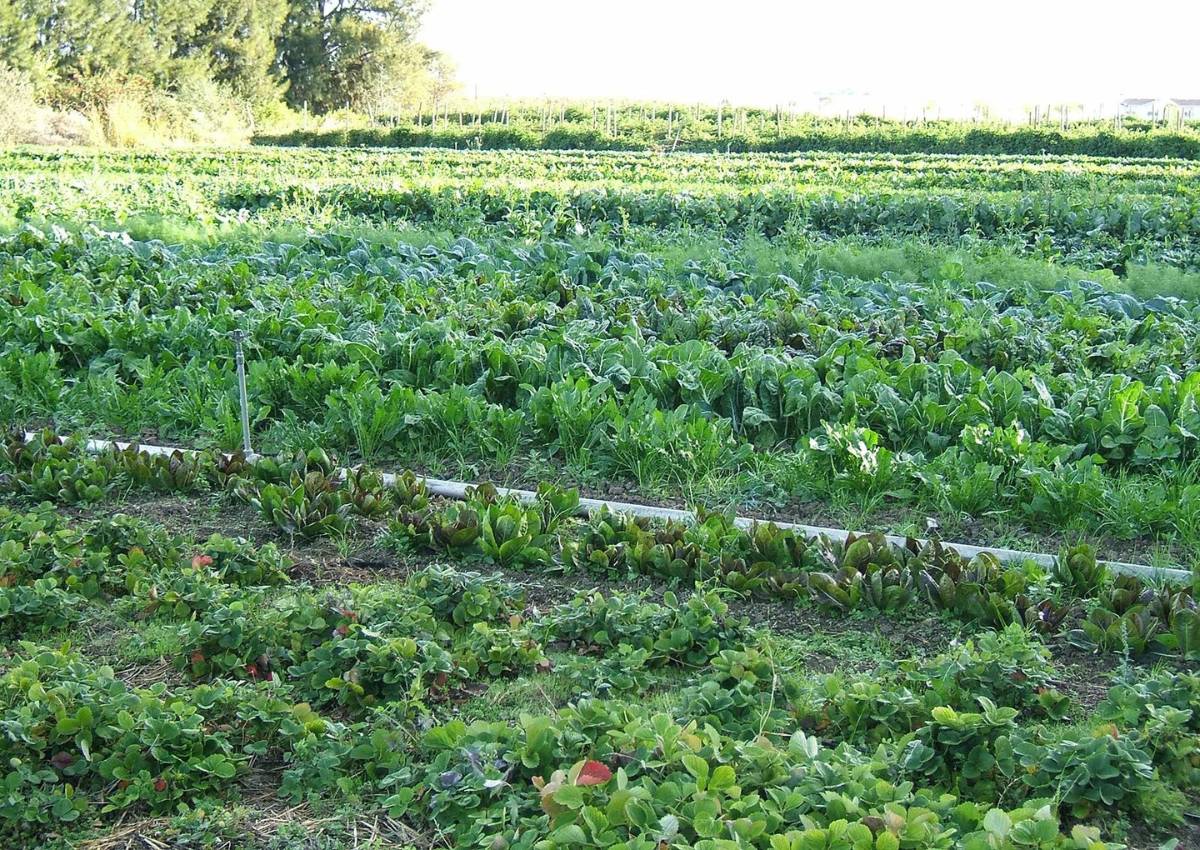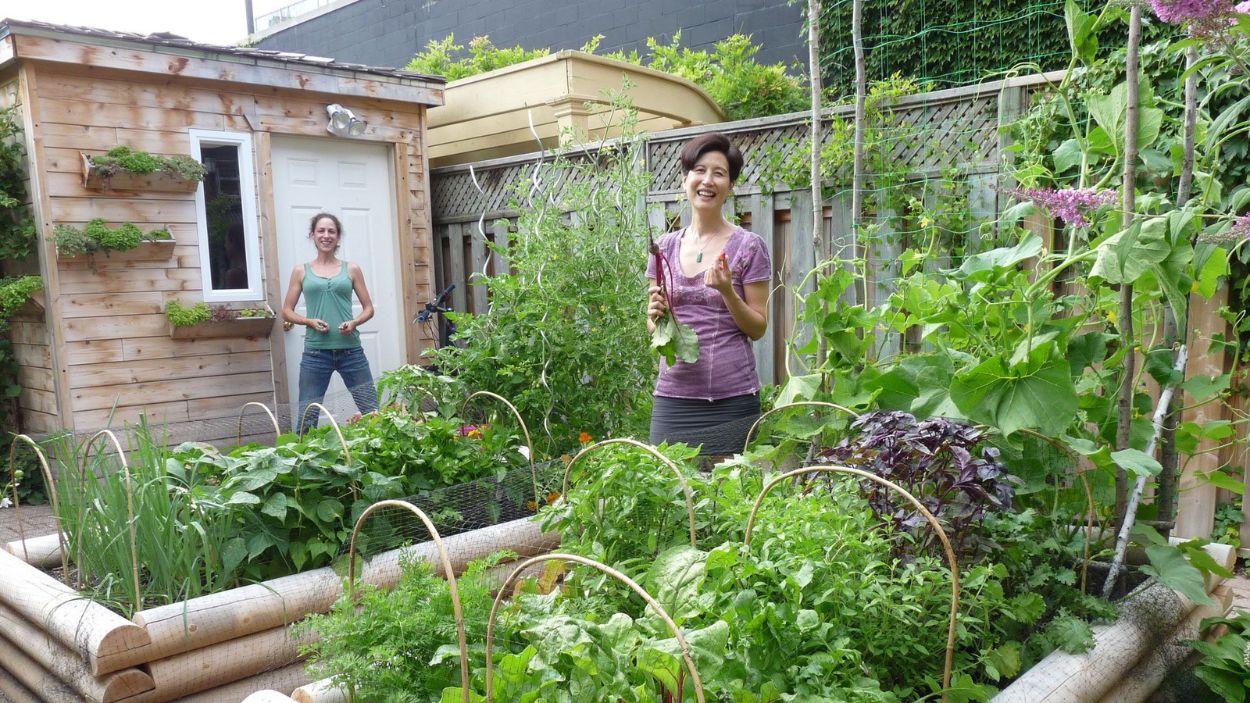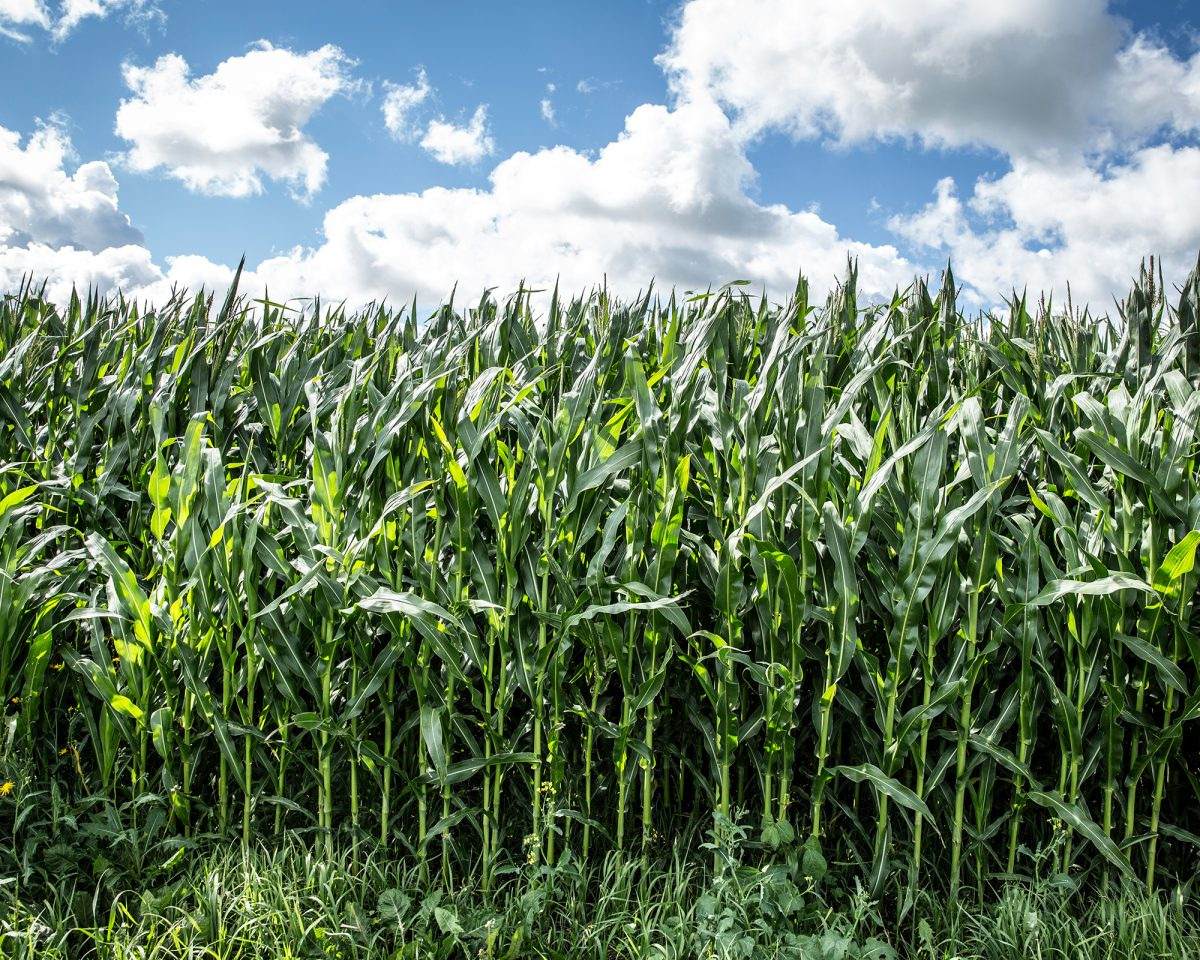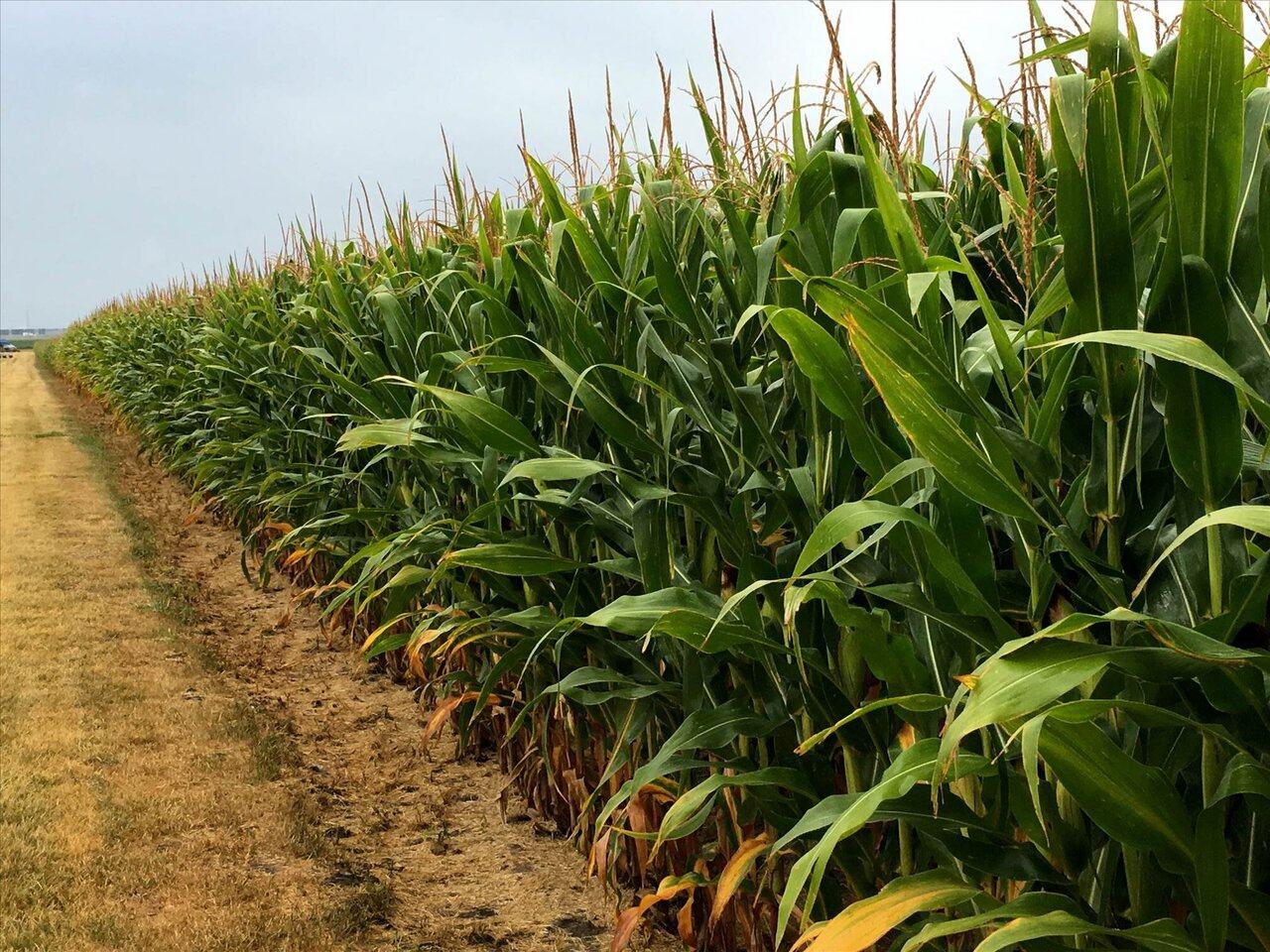Home>Garden Essentials>What Was The Significance Of Crop Rotation In Medieval Europe


Garden Essentials
What Was The Significance Of Crop Rotation In Medieval Europe
Modified: March 15, 2024
Discover the significance of crop rotation in medieval Europe and its impact on gardening practices. Learn how this ancient technique transformed agricultural productivity and sustainability.
(Many of the links in this article redirect to a specific reviewed product. Your purchase of these products through affiliate links helps to generate commission for Storables.com, at no extra cost. Learn more)
Introduction
In medieval Europe, agriculture played a crucial role in sustaining the economy and livelihoods of the people. One farming practice that significantly impacted agricultural productivity and the overall well-being of communities was crop rotation. Crop rotation refers to the systematic sequencing of different crops in a specific field over several years.
By carefully alternating crops, farmers in medieval Europe were able to mitigate soil depletion, increase yields, and revitalize the fertility of their land. The practice of crop rotation had profound economic, social, and environmental significance, shaping not only the agricultural landscape but also the lives of individuals within medieval communities.
In this article, we will explore the history of crop rotation in medieval Europe, analyze its economic, social, and environmental importance, and delve into the significant impact it had on agricultural productivity.
Key Takeaways:
- Crop rotation in medieval Europe improved farming by switching crops, increasing yields, and preserving soil. It helped communities thrive and brought people together to share knowledge and resources.
- By rotating crops, medieval farmers boosted productivity, diversified income, and protected the environment. This ancient practice laid the foundation for sustainable and prosperous agriculture.
Read more: What Was Crop Rotation?
Definition of Crop Rotation
Crop rotation is a farming practice that involves the systematic rotation of different crops in a specific field over a period of time. Rather than planting the same crop year after year, farmers strategically alternate the types of crops grown in a particular area.
The concept of crop rotation is based on the understanding that different plants have varying nutrient needs and interact with the soil in different ways. By shifting the types of crops grown in a field, farmers can optimize soil fertility, control pests and diseases, and reduce the reliance on synthetic fertilizers and pesticides.
Crop rotation typically involves dividing a field into different sections or plots and assigning specific crops to each section. These crops are selected based on their nutrient requirements, growth characteristics, and ability to improve soil health. For example, a typical crop rotation cycle may involve alternating cereals, like wheat or barley, with legumes, such as peas or beans, followed by a fallow period where no crops are grown.
The duration of each crop’s presence in a particular section may vary depending on factors such as climate, soil type, and local farming practices. Some crop rotation systems involve multi-year rotations, while others follow shorter rotations of a few years.
Overall, the goal of crop rotation is to maintain or improve soil fertility, reduce the incidence of pests and diseases, and optimize agricultural productivity in a sustainable manner.
History of Crop Rotation in Medieval Europe
The practice of crop rotation has ancient origins, dating back to civilizations like the Roman Empire and ancient China. However, it was during the medieval period in Europe that crop rotation became more prevalent and refined.
In the early medieval period, European farmers predominantly followed a two-field system, where half of the arable land was cultivated each year while the other half lay fallow. This system had its limitations, as it did not effectively replenish soil nutrients and often led to diminished yields.
It was not until the 13th century that European farmers began experimenting with more advanced crop rotation systems. The three-field system emerged as a popular practice, dividing the arable land into three sections: one for spring crops, another for fall crops, and the third left fallow. This allowed for more efficient use of land and better soil fertility management.
By the 14th century, a more sophisticated four-field system gained traction. This system involved dividing the land into four sections, with each section dedicated to specific crops such as cereals, legumes, root vegetables, or fallow. The rotation of crops helped replenish soil nutrients, control pests and diseases, and improve overall agricultural productivity.
The specific crop rotation patterns varied across different regions of medieval Europe, influenced by factors such as climate, soil conditions, and local farming traditions. Some areas followed fixed rotation cycles, where every field followed a predetermined sequence of crops. Others employed flexible rotation systems, allowing farmers to adapt their crop choices based on their specific needs and local conditions.
The adoption of crop rotation in medieval Europe not only enhanced agricultural productivity but also played a crucial role in the development of feudal society. With the introduction of more efficient farming techniques, surplus agricultural production increased, leading to the growth of towns and trade, and the consolidation of feudal power structures.
The knowledge and practice of crop rotation were passed down through generations of farmers, nurturing a deep connection between people, the land, and sustainable food production in medieval Europe.
Economic Significance of Crop Rotation
Crop rotation had a profound economic impact on medieval Europe, contributing to the stability and prosperity of agricultural communities. Here are some of the key economic benefits of crop rotation:
- Increased Agricultural Productivity: By rotating crops, farmers were able to optimize soil fertility and reduce the depletion of nutrients. This led to higher yields and increased overall agricultural productivity, providing communities with a more reliable and abundant food supply.
- Diversification of Income: Crop rotation allowed farmers to diversify their income streams. By growing different crops, they could take advantage of varying market demands and price fluctuations. For example, if the price of wheat was low, farmers could focus on the production of other crops, such as legumes or root vegetables, which may have higher market value at the time.
- Pest and Disease Management: Crop rotation helped control pests and diseases by disrupting their life cycles. Different crops have different susceptibility to specific pests and diseases. By rotating crops, farmers could break the pest and disease cycle, reducing the reliance on costly chemical pesticides and preserving crop health.
- Reduced Fertilizer Dependency: Through strategic crop rotation, farmers could naturally replenish soil nutrients. Legume crops, for example, have the ability to fix atmospheric nitrogen, enriching the soil with this essential nutrient for subsequent crops. By reducing the need for synthetic fertilizers, farmers could cut down on input costs and improve profit margins.
- Soil Conservation and Long-Term Sustainability: Crop rotation helped mitigate soil erosion and degradation. By alternating crops with different root structures and nutrient requirements, farmers could maintain soil structure and prevent nutrient depletion, ensuring the long-term sustainability of their land for future generations.
The economic benefits of crop rotation were not limited to individual farmers. The increased agricultural productivity and stability resulting from crop rotation supported the growth of feudal economies, fostering trade, commerce, and the development of towns and markets. This, in turn, stimulated economic activity and improved the overall well-being of medieval European societies.
Crop rotation in medieval Europe was significant because it helped improve soil fertility, increase crop yields, and reduce the risk of crop failure. It also allowed farmers to diversify their crops, leading to a more sustainable and balanced agricultural system.
Social Significance of Crop Rotation
Crop rotation held great social significance in medieval Europe, influencing various aspects of society and shaping the lives of individuals within agricultural communities. Here are some of the key social benefits of crop rotation:
- Food Security: Crop rotation played a vital role in ensuring food security for medieval societies. By diversifying the crops grown, communities were less vulnerable to crop failures or disease outbreaks. The increased agricultural productivity resulting from crop rotation provided a stable and sufficient food supply, reducing the risk of famine and improving the overall well-being of the population.
- Community Cohesion: The practice of crop rotation required coordination and cooperation among farmers within a community. The shared knowledge and implementation of crop rotation fostered a sense of communal responsibility and solidarity. Farmers shared insights, techniques, and resources, creating a tight-knit community that supported one another in their agricultural endeavors.
- Sustainable Land Management: Crop rotation promoted sustainable land management practices. By rotating crops, farmers helped maintain soil fertility, prevent soil erosion, and conserve natural resources. This ensured the long-term viability of the land for future generations, preserving a sustainable agricultural system for the community as a whole.
- Skills and Knowledge Transfer: Crop rotation required a deep understanding of plants, soil, and the environment. The practice facilitated the transfer of knowledge and skills from one generation to another, allowing the wisdom of experienced farmers to be passed down. This not only ensured the continued success of crop rotation but also fostered a sense of continuity and cultural heritage within the agricultural community.
- Resilience to Changing Conditions: Crop rotation enabled farmers to adapt to changing environmental conditions and challenges. By diversifying crops, communities could better withstand shifts in climate patterns, fluctuations in pest populations, or the emergence of new diseases. This adaptability enhanced the resilience of the community, helping them overcome adversities and maintain stability in their agricultural practices.
Crop rotation not only improved agricultural productivity and sustainability but also fostered a sense of community, resilience, and shared responsibility among medieval farming societies. It strengthened social bonds, facilitated the transfer of knowledge, and contributed to the overall well-being of the agricultural community.
Read more: What Is Crop Rotation Strip Cropping
Environmental Significance of Crop Rotation
Crop rotation had a significant environmental impact in medieval Europe, promoting sustainable agricultural practices and fostering environmental stewardship. Here are some of the key environmental benefits of crop rotation:
- Soil Health and Nutrient Cycling: Crop rotation helped maintain soil health by preventing nutrient depletion and improving nutrient cycling. Different crops have varying nutrient requirements and root structures. By rotating crops, farmers ensured that nutrients in the soil were utilized more efficiently and replenished naturally, reducing the need for synthetic fertilizers that can contribute to water pollution and ecosystem disruption.
- Reduction of Soil Erosion: Rotating crops with varying root systems and growth patterns helped mitigate soil erosion. Deep-rooted crops, such as legumes, helped stabilize the soil by preventing erosion and increasing the soil’s water-holding capacity. The rotation of shallow-rooted and extensive root systems helped maintain soil structure and reduce the risk of soil loss through wind and water erosion.
- Pest and Disease Control: Crop rotation disrupted the life cycles of pests and diseases by alternating crops. Different plants attract different pests and diseases, and by rotating crops, farmers reduced the buildup of pests and diseases in the soil. This reduced the reliance on chemical pesticides, minimizing negative impacts on beneficial insects, soil organisms, and the wider ecosystem.
- Biodiversity and Habitat Conservation: The practice of crop rotation encouraged biodiversity in agricultural landscapes. By diversifying crops, farmers provided a range of habitats for different plant and animal species. This promoted the survival of beneficial insects, birds, and pollinators, contributing to overall ecosystem health and resilience.
- Water Quality: Crop rotation played a role in improving water quality. By reducing the reliance on synthetic fertilizers and pesticides, farmers minimized the risk of nutrient runoff and chemical contamination in nearby water bodies. This protected water quality and supported aquatic ecosystems, reducing the impact on fish and other aquatic organisms.
Crop rotation in medieval Europe demonstrated a deep understanding and respect for the environment. By implementing this practice, farmers embraced sustainable farming methods that conserved soil, minimized pollution, and fostered biodiversity. The environmental significance of crop rotation extended beyond individual fields, positively impacting the wider ecosystem and contributing to the ecological balance of the region.
Impact of Crop Rotation on Agricultural Productivity
Crop rotation had a profound impact on agricultural productivity in medieval Europe, revolutionizing farming practices and significantly improving yields. Here are some of the key ways in which crop rotation enhanced agricultural productivity:
- Improved Soil Fertility: Crop rotation helped replenish soil nutrients and reduce soil depletion. Different crops have varying nutrient requirements, and by rotating crops, farmers could ensure that the soil was not continuously stripped of specific nutrients. For example, legume crops, such as peas or beans, have the ability to fix atmospheric nitrogen, enriching the soil with this essential nutrient for subsequent crops. This improved soil fertility, resulting in healthier plants and higher yields.
- Pest and Disease Management: Crop rotation disrupted the life cycles of pests and diseases. Rotating crops helped break the cycle of pests and diseases that are specific to certain crops, reducing their buildup in the soil. This natural pest control method reduced the need for chemical pesticides, limiting the damage to crops and promoting healthier plants with increased productivity.
- Optimized Nutrient Utilization: Different crops have varying abilities to extract nutrients from the soil. By rotating crops, farmers could take advantage of the complementary nutrient uptake of different plants. For example, cereals like wheat or barley have deep root systems that can access nutrients in deeper soil layers, while legumes have symbiotic bacteria that fix nitrogen from the air. These interactions helped maximize nutrient utilization, resulting in improved crop growth and higher yields.
- Reduced Soil Erosion: Crop rotation helped mitigate soil erosion, which is a major threat to agricultural productivity. By alternating crops with different root systems and growth patterns, farmers could maintain soil structure and reduce the risk of soil erosion caused by wind and water. This protected the topsoil, which is rich in nutrients and crucial for crop growth, ensuring optimal conditions for higher yields.
- Enhanced Resilience to Climate Variability: Crop rotation allowed farmers to adapt to changing climate patterns. By planting a diverse range of crops, communities were better prepared for various weather conditions. For example, some crops may be more tolerant of heat or drought, while others may thrive in cooler or wetter conditions. This adaptability increased the resilience of agricultural systems, reducing the risk of crop failures and ensuring consistent yields.
The implementation of crop rotation in medieval Europe transformed agricultural practices and played a pivotal role in increasing agricultural productivity. By optimizing soil fertility, managing pests and diseases, and promoting sustainable land management, crop rotation revolutionized farming methods and contributed to the overall prosperity and stability of medieval European societies.
Conclusion
Crop rotation was much more than a simple farming practice in medieval Europe. It was a cornerstone of sustainable agriculture, with profound economic, social, and environmental significance. By systematically alternating crops, medieval farmers were able to enhance agricultural productivity, ensure food security, and preserve the health of the land for future generations.
The practice of crop rotation not only improved soil fertility but also mitigated the risk of pests and diseases, reduced soil erosion, and conserved water resources. By diversifying crops and adopting rotation systems, communities cultivated a more resilient and sustainable agricultural landscape.
Economically, crop rotation increased agricultural productivity, diversified income streams for farmers, and played a pivotal role in the growth of medieval towns and trade. It stimulated economic activity, improved food availability, and contributed to the stability and prosperity of the society as a whole.
Socially, crop rotation brought communities together, fostering a sense of shared responsibility and cooperation among farmers. It provided an avenue for the transfer of knowledge and skills, ensuring the continuity of sustainable farming practices across generations. Crop rotation helped build resilience, brought communities closer, and shaped the identity of agricultural societies in medieval Europe.
From an environmental perspective, crop rotation promoted soil health, reduced the reliance on synthetic fertilizers and pesticides, and conserved natural resources. It supported biodiversity, minimized chemical contamination, and protected water quality, contributing to the overall ecological well-being of the farming landscapes.
In conclusion, crop rotation was a fundamental practice in medieval Europe that revolutionized agriculture and had far-reaching impacts on the economy, society, and the environment. Its legacy can still be observed in modern-day agricultural practices, as farmers continue to recognize the importance of diversifying crops and implementing rotational systems for sustainable and productive farming.
Frequently Asked Questions about What Was The Significance Of Crop Rotation In Medieval Europe
Was this page helpful?
At Storables.com, we guarantee accurate and reliable information. Our content, validated by Expert Board Contributors, is crafted following stringent Editorial Policies. We're committed to providing you with well-researched, expert-backed insights for all your informational needs.















0 thoughts on “What Was The Significance Of Crop Rotation In Medieval Europe”